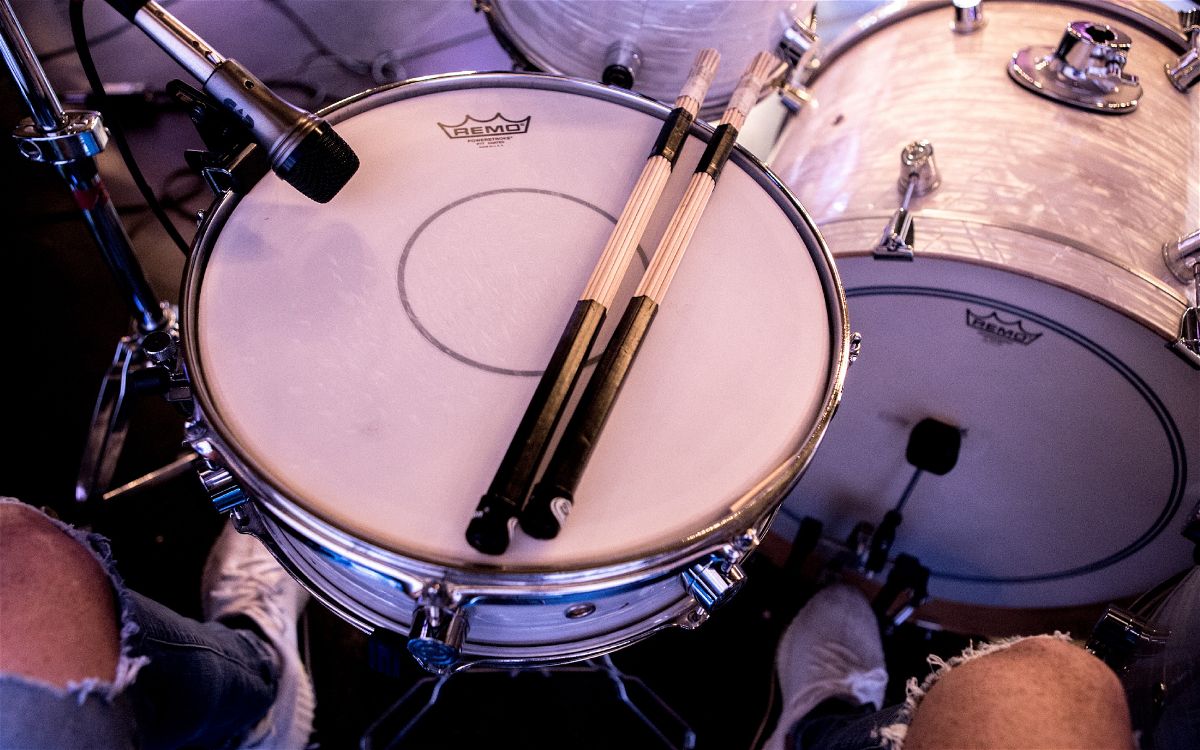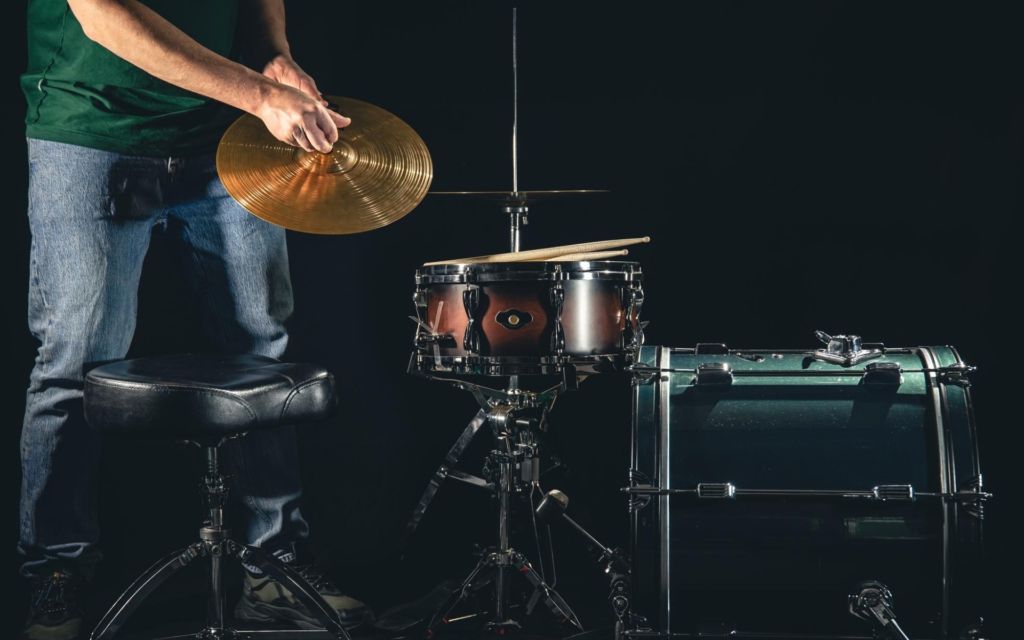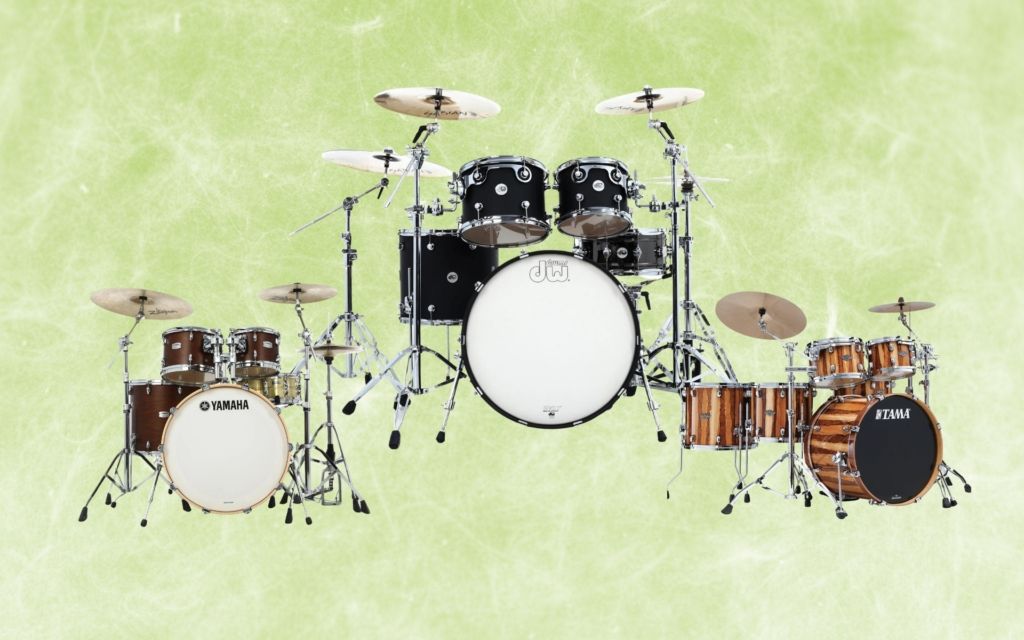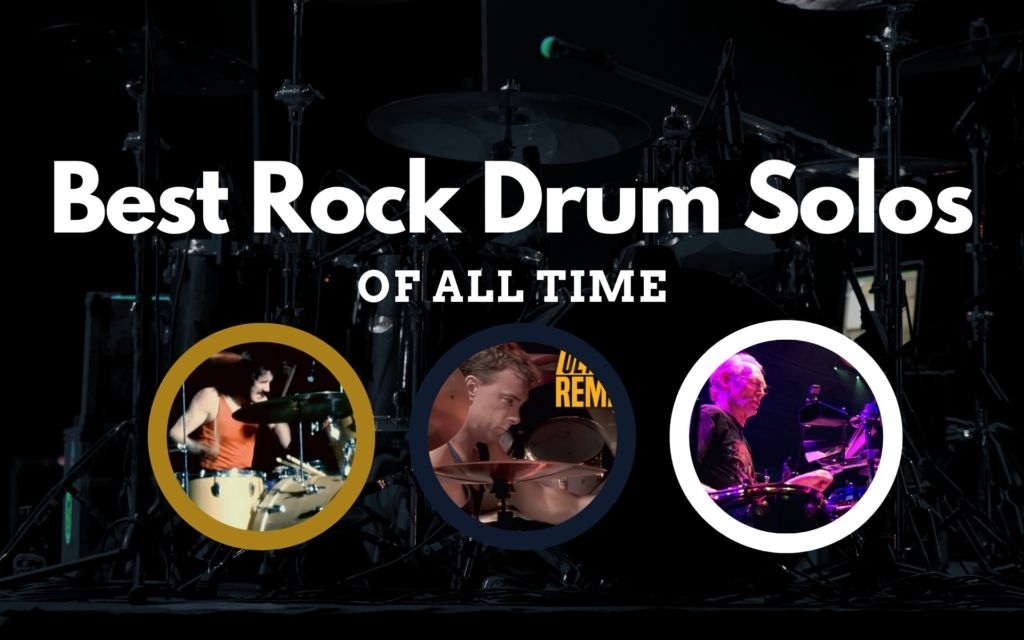Rhythm is an intrinsic part of human nature. There is a natural rhythm to the way we walk, talk, and live our lives, and although there is much debate on the origins of percussion and beat making, it’s something we’ve undoubtedly done for most of our existence.
It’s impossible to discuss the subject of percussion and drums without mentioning the snare drum. One of the most used instruments across all musical genres, the snare can be used in a myriad of ways to enhance a piece of music or as the main focus.
To figure out when the snare drum was invented, we need to embark on a journey that goes way back to ancient times and brings us right up to the present day. After reading this guide, you’ll be well-versed in the origins and history of the snare drum and how it became such an integral part of popular music.
Contents
When Was The Snare Drum Invented?
Although the origins of the snare drum can be traced back much further, the period when it became distinctively different from its predecessor, the tabor, was in the early 14th century.
Since then, the design of the snare drum has been tweaked and adjusted to create the modern version that is found in almost all rock, jazz, pop, and other drum sets.
The Tabor
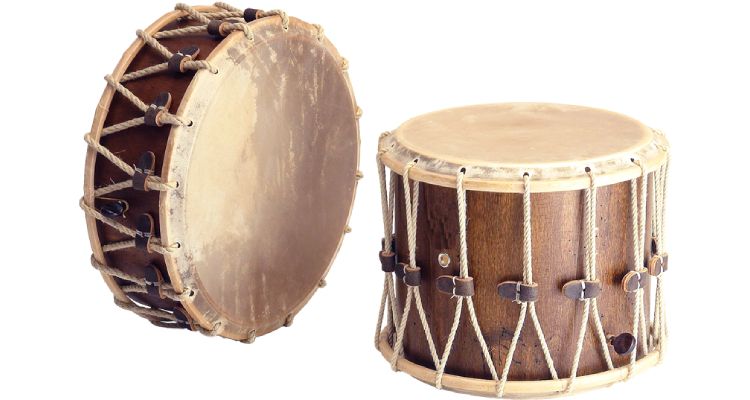
The general consensus amongst historians is that the snare drum directly descended from a drum known as the tabor, which was invented and popularized during the medieval period.
The tabor was used to accompany small flute instruments, like the pipe, often both played simultaneously by one musician. Its cylindrical shell is made from wood, and ropes are used to create tension on the pair of skins.
However, the part of the tabor that is most relevant to us is its adjustable snare. The distinctive sound of the snare made the tabor popular in war, as the rhythms played could be heard from long distances away compared to other medieval drums.
Early Evolution of the Snare Drum
In the early 15th century, the tabor began to evolve into something that more resembles the snare drum we’re used to seeing nowadays.
Employed by a group of soldiers from Switzerland to communicate with one another while in battle, the tabor was elongated to increase its maximum volume and, ultimately, enhance its effectiveness for sending signals to fellow soldiers.
The new-look tabor was worn on the side of a person’s body, with a leather strap used to hold it against them. This larger drum was used for military purposes throughout the 1400s and 1500s until it underwent further evolution in the 1600s.
Advancements and Innovation
The addition of screws to the drum in the 17th century marked a significant development and step towards the modern snare. These screws were employed to fix the snares down, resulting in a sound that had more treble frequencies and tighter dynamics.
It was in the 18th century, though, that major breakthroughs were made. Numerous changes were made to the design of the drum, most notably increasing the tension on the snares further to create a more consistent sound.
This improved method of tensioning gave the snare drum a crisp, punchy sound that made it possible for percussionists to play with more control and precision. Prior to this, the looseness of the snare likely resulted in a more messy, chaotic sound.
Modern Snare Drum History
In the 20th century, the snare drum underwent more changes – notably, metal snares were created and replaced their wooden counterparts. Different snare sizes were created for specific musical styles and purposes, which we’ll explore in the following sections.
Who Invented the Snare Drum?
Due to the long history and uncertain origin of the snare drum, it’s impossible to definitively say who invented it. However, we do know that Swiss soldiers were amongst the first to lengthen the tabor, making it more like the snare drums that are used today.
Military Snare Drums
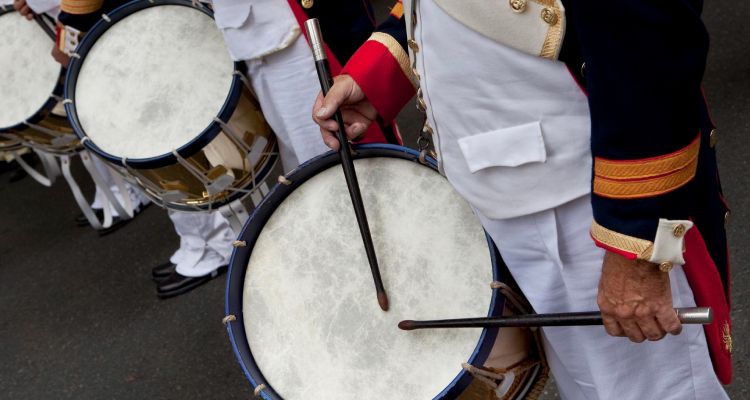
Arguably the most important use of the snare drum, in terms of the techniques and way that it is played, is in the military. As we’ve already discussed, the tabor has a long history as an instrument used in war, and the snare has continued this legacy.
American military snare drummers were responsible for many of the rudiments that are used across contemporary drumming styles today. They were trained intensively on technique and rudimental skills, and have remained an integral part of the military to this day.
The development of the marching snare, which is specifically designed for military-style drumming, has led to an explosion of popularity, particularly in the U.S.
Most high schools and colleges have marching bands, which compete with one another in competitions or perform at sporting events or other prestigious events. This style of drumming has also crossed over into other popular music genres, such as hip-hop, EDM, and rock.
The Snare in Classical Music
In classical music, the snare drum is a staple of the percussion section of an orchestra. It’s sometimes referred to as the “side drum,” as it isn’t the most prominent drum, as it often is in other styles of music, but is rather used for enhancing certain accents.
Snare drums are also often used for solos in classical music. Many of these solos are noticeably influenced by the previously discussed military style of snare drumming, which uses lots of rolls and rudiments in a marching band fashion.
The snare is excellent for accenting beats and parts in an orchestra because it can be played with such varying velocity and dynamics, but unlike in other musical genres, it isn’t used to keep the backbeat of a piece very often.
Jazz, Rock and Pop
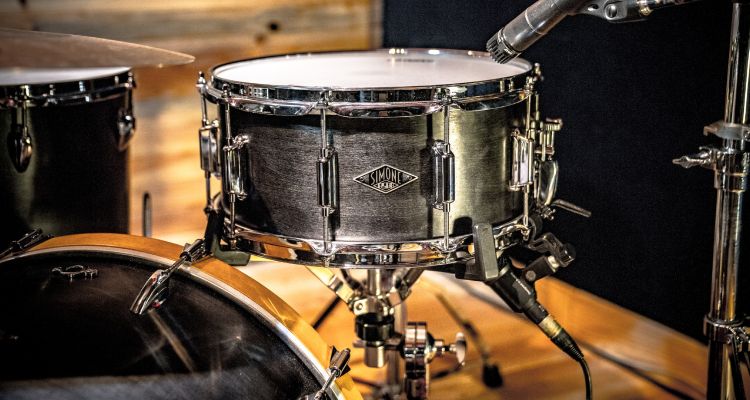
Jazz, rock, and pop drumming relies heavily on the snare drum. These three contemporary music styles have dominated popular music over the past century, and a large part of their success is down to the drums.
Firstly, jazz drummers use the snare drum for playing backbeats and controlling the dynamics. They often use the traditional grip rather than a match grip, allowing them to play with more freedom when following the melodies and rhythms played by other musicians in the ensemble. The snare is also a prominent part of jazz drum solos.
Rock music exploded in popularity in the 1950s and 60s, and this resulted in a huge number of people wanting to learn to play the drums. In rock, the snare is used mainly to keep the backbeat.
Classic rock beats usually consist of a snare drum being played on the second and fourth beats, in 4/4 timing. However, subgenres like progressive rock and metal often involve highly complex and technical snare drum playing in different time signatures.
Rock and metal drummers play the snare with power, blistering speed, and also intricate feel. There’s no doubt that the snare is a massive part of the overall sound of rock music and will continue to be as long as the genre still exists!
Pop music prior to the 1980s was made using analog recording methods and technology, so session drummers were always in high demand. While most pop music isn’t as complex as the styles we’ve previously mentioned, the snare plays a pivotal role nonetheless.
In pop, the snare is used to keep the simple beat, and similarly to most rock music, it is played on the second and fourth beats in a four-bar phrase.
The Snare Drum in Other Styles of Music
In addition to the styles we’ve covered, the snare drum has also become an integral part of other musical genres that have become popular in recent decades.
Hip-hop music originated through DJs chopping up samples and creating new beats for rappers to emcee over, and this musical style almost always uses a snare drum to keep the backbeat, along with a kick drum and hi-hat patterns.
When performing live, many hip-hop and rap artists use live drummers, but in recordings, it’s common for samples of snare drums to be used to create the beats.
The snare is sometimes replaced by a sample of a clapping sound or some other sample that bears some resemblance to the sound of a snare drum.
Likewise, electronic music genres such as EDM, dance, techno, and house music all heavily feature a snare – but it’s commonly a digital sample rather than a live drummer.
The emergence of sampling technology and VST instruments has made it easier for producers and musicians to add snare sounds to their music. This has led to an expansion of the different types of snare sounds that are available.

